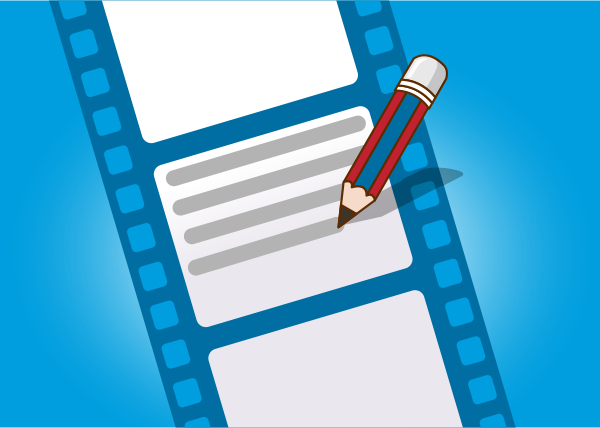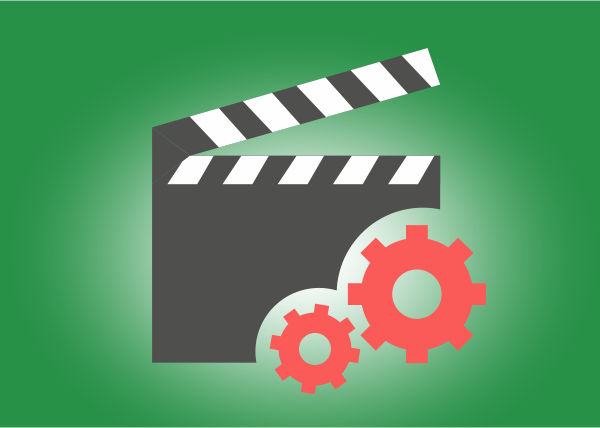Editing & filming
Overview of Editing & filming curriculum
This module teaches students the knowledge and skills to screen and analyze scenes from seminal works and apply that knowledge considering the foundations of filmmaking through the critical examination of historical materials. The theoretical and practical applications of the module culminates in the compilation of imagery that encompasses a variety of ideas and concepts and utilizes film and video cameras and editing techniques.
The objective of this module is to provide students with a focused knowledge and clear understanding of editorial skills, including dialogue editing, scene transitions, time and space perception, tempo, sound effects, graphics, editing picture to music, and mood changes. The concept of visual storytelling will be explored and analyzed within various media applications to demonstrate the importance of constructing a fully developed idea using images. This workshops review the process of video editing and filming throughout the entire development of a media project.
A series of workshops and group sessions that explore all the different aspects of editorial skills, including dialogue editing, scene transitions, time and space perception, tempo, sound effects, graphics, editing picture to music, and mood changes. In the second part the workshops develop an understanding of the process of shooting on motion picture film.
Module Structure and Curriculum
| 1. | The whole is greater than the sum of its parts | In this workshop the students will test the knowledge and impressions of each other and the individual characteristics in view of the importance of the individual and his characteristics for the value of the group. |
| 2. | Meaning of the image and the juxtaposition of images | In this workshop students screen and analyze scenes from seminal works and apply that knowledge by editing the dailies from an award-winning film. This workshop is an in-depth investigation of the theory of editing and is designed to impart a greater understanding of the art of the motion picture editor. The theory of motion picture editing is analyzed through both historic and contemporary films, and through Kuleshov effect. |
| 3. | Editing I | In this workshop, students are introduced to the concepts and aesthetic of basic editing and to the role of the editor as a storyteller. Students learn editorial skills, including dialogue editing, scene transitions, time and space perception, tempo, sound effects, graphics, editing picture to music, and mood changes. |
| 4. | Editing II | This workshop covers narrative development and refinement techniques for editors in order to manipulate emotions of their audience. Students learn about the control of picture, sound, and performance, and how to develop the content, mood and pacing of a narrative story. As editors, students work with the story arc, editing beats, structure and visual-sound continuity. Successful completion of this workshop prepares students for cutting a story-driven editing project. |
| 5. | Documentary editing | In this workshop, students learn editing techniques used in documentary filmmaking as they edit and complete a short non-fiction film. Students learn both aesthetic and practical approaches to editing their film, along with basic engineering and media management for long form projects. |
| 6. | Digital Editing | In this workshop, students learn the language and theory of editing and then put those theories into practice using digital editing software. This hands-on process introduces essential skills and good editing habits along with understanding and appreciation of the role of editing in the storytelling process. Students also explore and apply organizational and workflow skills to asset management, sequence nesting, compositing, file or project import/export and other aspects of timeline and project management. |
| 7. | Advanced Video | The concept of visual storytelling will be explored analyzed within various media applications to demonstrate the importance of constructing a fully developed idea using images. The entire process of post-production will be examined, and with the emphasis of color correction as an art work, as another tool to touch the audiences. The students will dig deeper into image sequencing and analyse story continuity, and will learn to implement VFX – visual effects, color correction, media management, and industry terminology into the visual narration. Students will apply these concepts to a digital video project using technical skills that promote production value and showcase effective storytelling. |
| 8. | Filmmaking I | This workshop addresses main filmmaking tools and techniques, and introduces the students to the technical part of the process. There will be emphasis on camera operation, lenses, film stocks, filters, lighting and light measuring, as well as the art and aesthetics of cinematography. Variables in lighting, exposure, camera positions and blocking the action of a scene with a director are covered. The students will grasp how even these technical aspects, together wit artistic work, is serving the story and giving it emotion and meaning. |
| 9. | Filmmaking II | This workshop will deepen student’s understanding of how to master the artistic aspect of filmmaking process and how to make decisions as a director in preparation, and on set. Students will study basic color theory, production design of the film (scene building, costumes, color palette, visual style and the look of the film). Special attention is given to the emotional attributes that can be assigned to an image, and a vision that the student has as a director. Students will also learn how to work with actors and non-actors, and will learn how to block the scene in order to compose a choreography between actors, their space and camera. They will learn how to prepare for shooting, to compose a storyboards and a shot list, and a plan of shooting. The students will learn how to behave on set and how to manage a film crew, direct them, and how to share a vision with them. |
| 10. | Practicum I | This workshop develops an understanding of the process of shooting on motion picture film. |
| 11. | Practicum II | This workshop develops an understanding of the process of shooting on motion picture film. |
| 12. | Practicum III | This workshop develops an understanding of the process of shooting on motion picture film. |
Running Curriculum Elements
- analysing of feature and television drama script
- screening and analysis of films in group sessions with tutors analysing them from the point of view of a screenwriter
- team building and group cohesion improvement games and activities
Evaluation
Self-Evaluation Student progress is monitored and assessed by means of written self-evaluations supported by tutorial feedback and assessments.



